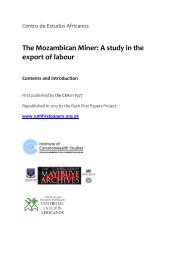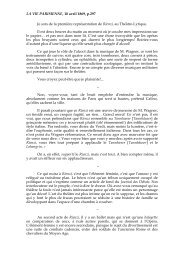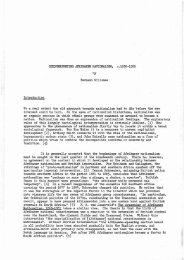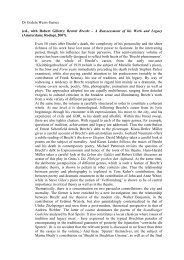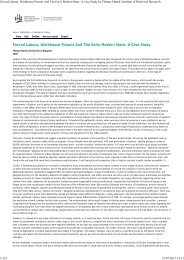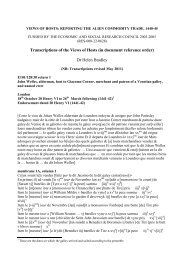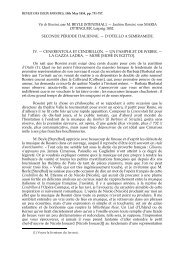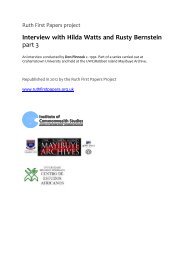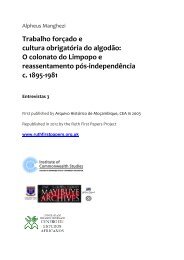Roraima: Brazil's northernmost frontier by John Hemming - SAS-Space
Roraima: Brazil's northernmost frontier by John Hemming - SAS-Space
Roraima: Brazil's northernmost frontier by John Hemming - SAS-Space
You also want an ePaper? Increase the reach of your titles
YUMPU automatically turns print PDFs into web optimized ePapers that Google loves.
were seedy, its houses tumbledown. 'Most of the inhabitants seemed to have<br />
no occupation of any kind, being caught up in the vicious circle of semi-starvation<br />
which makes people too apathetic to exert themselves for more.<br />
Perhaps they picked up a few casual wages during the flood season when<br />
boats ran from Manaus fairly frequently and the ranchers came in for stores<br />
and needed labour for shipping their cattle. All the time I was there I scarcely<br />
saw anyone except the school teacher earn anything - or spend anything....<br />
The thousand-odd inhabitants spent the day lying indoors in their hammocks<br />
and the evenings squatting on their doorsteps gossiping.... Everyone looked<br />
ill and discontented. There was not a fat man or woman anywhere. The<br />
women, in fact, led an even drearier life than the men. They had no household<br />
possessions to care for, no cooking to do, they left their children to<br />
sprawl about the streets naked or in rags. They were pretty - very small and<br />
thin, small boned and with delicate features... [The men] are naturally<br />
homicidal <strong>by</strong> inclination, and every man, however poor, carries arms; only<br />
the universal apathy keeps them from frequent bloodshed. There were no<br />
shootings while I was there; in fact there had not been one for several<br />
months, but I lived all the time in an atmosphere that was novel to me, where<br />
murder was always in the air.' 34<br />
Transport<br />
The most serious constraint on the growth of <strong>Roraima</strong>'s cattle industry was<br />
difficulty of transport. The region had no roads, only trails, and ranchers<br />
relied on moving their animals <strong>by</strong> river. The only route for cattle exports to<br />
Manaus and Amazonas was down the Rio Branco. Coudreau said that in<br />
1885 forty boats a year went down the great river, each carrying between fifteen<br />
and thirty-five animals - an annual total of about a thousand head. The<br />
German traveller Grupe y Thode described these as 'large heavy boats<br />
which have great difficulty passing the rapids of the Rio Branco, and then go<br />
on to Manaus in an even longer and harder journey'. 35<br />
The round trip to Manaus took three months and was very tough. Sails<br />
could be used only when there was a following wind, which tended to be on<br />
the descent of the Branco and ascent of the Negro. Otherwise, motive power<br />
came from the crew of six men, four of whom were Indians. They worked<br />
with paddles, oars, poles, ropes, pulleys and capstans to heave the batalhao<br />
up against the current. It would return with a cargo of coffee, sugar, paraffin,<br />
tools, guns, cloth and the many manufactured items unobtainable on the<br />
upper river - unless people traded with British Guiana, as Stradelli said they<br />
did. Once the boat reached the rapids on the return journey, its cargo had to<br />
be unloaded and carried round overland while the boat itself was hauled<br />
over the rocks and raging current with hawsers of piagaba fibre. Conditions<br />
improved after the first decade of the twentieth century, when steam<br />
replaced human power.<br />
Ever since the first Portuguese occupation of the upper Rio Branco, the



